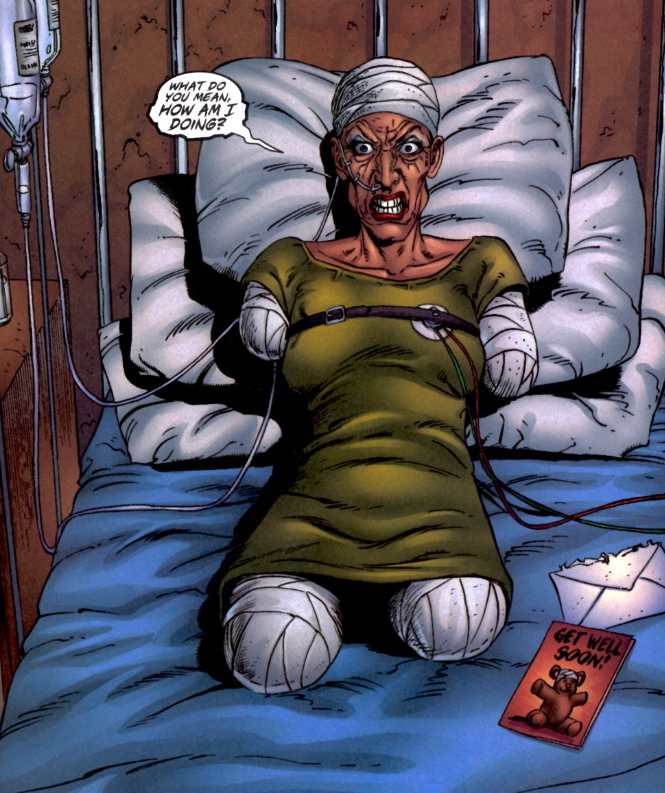
And here we are. We got through the overly aggressive, steroid-heavy early ’90s, the bankruptcy of 1996, and the feckless, rootless, groping in the dark that came at the end of that decade, and now we’re at the year 2000 and the first comic of the reborn Marvel that really showed the full scope and potential of the line–led by new Editor-in-Chief Joe Quesada.
That’s what Welcome Back Frank meant to the evolution of Marvel.

In terms of the evolution of the Punisher, Welcome Back Frank is the single most important take on the character. It moved him from a go-go booted side character to a true force of nature–starting with its photo realistic covers and moving in to content that was way beyond rated R.
In terms of Pun as a Marvel Universe character, it’s not as solid as Circle of Blood–the book that defined Frank Castle for purposes of the main 616-U–but in terms of influence, lasting power, and balls-out blistering fun, this is THE Punisher comic.

It arrived under the Marvel Knights banner, at a time when the publisher was trying to reinvent itself and make everyone forget how crappy their comics had become during the previous four years. Especially their Punisher comics. Punisher had basically become a guy who you slap on a cover to make people want to by the book based on looks or impulse alone. The character didn’t even make sense anymore. Then he died and literally became an angel.
Garth Ennis and Steve Dillon brought it all back to basics.

First, they tossed out the Punisher-as-angel-of-death storyline that sucked so hard by having Castle himself dismiss any concept of ascension, while tossing a hoodlum down, down, down to his death.

He introduced a supporting cast (Spacker Dave!) that really existed only as scenery (they were used quite well, though, in the Thomas Jane Punisher movie), or as a way to explain why Castle no longer needs people.

Except for cookies.

I love this sequence, below, because you can see how she thinks she’s breaking in with Castle (look at the way she is staring at his pecs in the last panel), while he’s saying that accepting her kindness is the best way to get rid of her.

But the real innovation was Ennis’ use of the police force as a way to tell Punisher’s story. Above we meet Detective Martin Soap, who forms an uneasy alliance with Punisher that enables him to get a promotion in the NY Police Department.
When Ennis’ subsequent, acclaimed Punisher MAX run got going, there would be pages and pages of people other than Punisher. Punisher almost became a background character in an ensemble cast of crime stories. Using others to tell the main character’s story was Ennis’ way of writing a three-dimensional book about a largely one-dimensional character. He embraced Punisher’s single-mindedness where others had tried to artificially create depth through internal dialog that read like luke warm Daschell Hammet.
And along the way, Ennis found time to mess with Daredevil in what is essentially a rewrite of Frank Miller’s Daredevil #184, in which DD and Pun went head to head for the first time. Before this, that book was really the high-water mark for any Punisher team-up. This scene set a new bar. It says, “Yeah, Punisher doesn’t fit in. So either accept that and leave him alone, or prepare to meet true neo realism. And by the way, you can’t handle the neo realism.
It’s madness, utter madness, right down to the villain:

The story is simple: Bad Gnucci Mafia family led by a nut who Punisher cuts to pieces (literally, see above). Vigilantes who idolize Punisher, but who Pun kills in the end because they’re also criminals. Lone wolf ends issue #12 alone, and has wiped out the entire Gnucci family.
This is easily one of the greatest comics of all time. And Ennis’ run on Punisher that follows is just as good (or even better).

